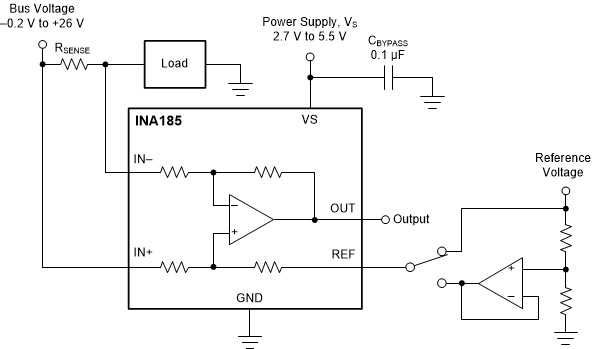ZHCSJH3A March 2019 – November 2023 INA185
PRODUCTION DATA
- 1
- 1 特性
- 2 应用
- 3 说明
- 4 Pin Configuration and Functions
- 5 Specifications
- 6 Detailed Description
- 7 Application and Implementation
- 8 Device and Documentation Support
- 9 Revision History
- 10Mechanical, Packaging, and Orderable Information
7.2 Typical Application
One application for the INA185 is to monitor bidirectional currents. Bidirectional currents are present in systems that have to monitor currents in both directions; common examples are monitoring the charging and discharging of batteries and bidirectional current monitoring in motor control. Figure 7-3 shows the device configuration for bidirectional current monitoring. Applying stable REF pin voltage closer to the middle of device supply voltage allows both positive- and negative-current monitoring, as shown in this configuration. Configure the INA185 to monitor unidirectional currents by grounding the REF pin.
 Figure 7-3 Measuring Bidirectional Current
Figure 7-3 Measuring Bidirectional Current